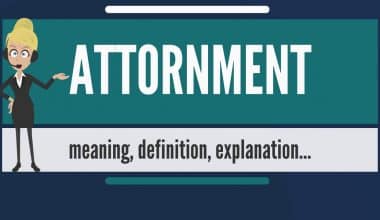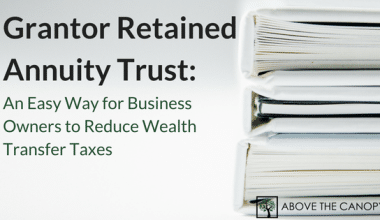Tenancies are often for a fixed period of time, such as one year, two years, or five years. Sufferance tenancy refers to the form of tenancy that occurs upon the expiration of this term. Homeowners who rent their homes to renters should be aware of their rights and obligations when these lease periods end. In this article, learn more about tenancy at sufferance, example, Florida, California, and Texas, as you keep reading.
Tenancy at Sufferance
When a tenant continues to stay in a rented property after their rent has expired, this is referred to as a tenancy at sufferance. Landlords and renters often enter into a lease agreement that permits the tenant to stay in the property for a specified length of time, but there are occasions when the renter may continue to reside in the property after the lease period has elapsed.
This results in a tenancy at sufferance. However, both the landlord and tenant have certain rights in this case.
What Is Another Name for Tenancy at Sufferance?
During a tenancy at sufferance, the tenant is bound by the terms of the expired lease (including the payment of rent). Often referred to as a “holdover tenancy.”
>> Read Also: PRIVITY OF CONTRACT: Overview, Examples, Comparisons (+ Free PDFs)
Further Explanation on Tenancy at Sufferance
In general, tenants at sufferance enjoy the same legal protections as other types of tenants. Nonetheless, in some countries, these residents do not have the same eviction rights as others. Also, tenants are at sufferance or will require written notice and additional time if the landlord intends to evict them. However, legal eviction of a tenant under sufferance may still need the use of the judicial process.
Normally, a tenant in sufferance exists when a written rent has expired and has not been self-extended. The renter may have decided not to renew the lease yet continues to stay and pay rent on the property. A tenant in sufferance may also exist if a landlord serves a lawful notice to terminate the tenancy for breach of the lease or nonpayment of rent.
>> Learn: Holdover Tenant: How to Calculate Hold Over Rent Without Stress (+Detailed Guide)
What Is Tenancy at Sufferance?
Tenancy at sufferance is a legal arrangement that allows a tenant to stay on a property after the lease term has ended and before the owner demands the tenant quit the property. If a tenancy at sufferance occurs, the terms of the original lease must be followed. As well as the payment of any rent.
This is in contrast to a tenancy at will, which occurs when a tenant occupies a property with the owner’s agreement but without the necessary written contract or lease.
Tenancy at Sufferance Example
Rick signed an apartment lease last year. He’s been looking for a house, and things feel like they’re working fine. He’s carefully planned to vacate the apartment for a few days. Perhaps, after signing the closing papers for his new property.
The property owner notifies Rick at the last minute that they are unable to accept his home mortgage. Rick is unable to finance the new home and hence loses the contract. What are your options now? The lease has only a few days remaining, however, he has nowhere else to go.
Rick’s lease contains no provision allowing him to continue occupying the property on a month-to-month basis after the lease expires. If he continues to live in the flat after the lease expires and his landlord does not require him to leave, he is in a tenancy at sufferance for example.
Can Landlord End Tenancy Without Reason?
At the conclusion of the fixed term, the landlord may evict you without cause. As long as proper notice has been given, they may petition the court for a possession order.
How Long Can a Tenant Stay After the Lease Expires?
A holdover tenant is a tenant who remains in the rental unit after the expiration of the lease. If the tenant continues to pay rent, the tenancy becomes essentially month-to-month. Legally, a holdover tenant is permitted to remain in the rental unit so long as the landlord does not take action to evict them.
Under What Circumstances Can You Break a Tenancy Agreement?
You can only terminate your fixed-term tenancy early if the terms of your lease permit it or if your landlord agrees. If your lease allows you to terminate your fixed-term tenancy early, you have a “break clause.” Your lease will specify when the break clause can be invoked.
>> Read also: FCRA COMPLIANCE: Why Employers Should be Compliant (+ Quick Tips)
Tenancy at Sufferance Florida
Florida Statutes 83.04 – Holding over after term, tenancy at sufferance, etc
Whenever a tenancy established by a written document with a defined period expires. As well as the tenant keeps possession of the premises without extending the lease by another written document, such possession shall be considered as a tenancy at sufferance. The simple payment or acceptance of rent shall not be regarded as a renewal of the term. Nevertheless, if the holding over is continued with the lessor’s written consent. The tenancy shall change to a tenancy at will in accordance with the provisions of this law. In general, this is how tenancy at sufferance Florida works.
Tenancy at Sufferance California
If a tenant continues to occupy their apartment after the lease term expires without the landlord’s consent. However, they are classified as a holdover tenant (also known as a “tenant at sufferance”). Without formally serving a notice to quit, a landlord can file an eviction lawsuit (or, as it is known in California, an “unlawful detainer”). Perhaps, against a holdover tenant, speeding the process slightly. Moreover, a holdover renter may be held accountable for rent. As well as damage caused during the period they have exceeded their lease term.
Generally, a lease sets the amount of rent that a tenant must pay and provides for annual growth. When a lease expires, landlords have the option of increasing the rent for a holdover tenant. A commercial rent increase of 150 percent has been held to be enforceable in California courts. Provided the tenant had the option of leaving the property rather than paying the increase in rent.
>> Discover: Purchase Agreement: Real Estate Buy and Sell Contract
Tenancy at Sufferance Texas
When a lease expires, many tenants prefer to vacate. Landlords in Texas have the option of allowing holdover tenants to remain in the property or evicting them through a forceful detainer lawsuit.
Tenancy at sufferance Texas classifies holdout renters as either “at will” or “at sufferance.”
There are two possible results for a Texas renter who remains in their rental apartment beyond the lease’s expiration date:
#1. Tenancy at will: If the landlord continues to accept their rent payments, they have established a month-to-month tenancy with the same terms as the initial lease.
#2. Tenancy at will: This occurs when the landlord refuses to accept rent from the holdout tenant and indicates that the tenant must vacate the property. Landlords have the right to terminate this sort of tenancy at any moment by instituting a forced detainer action.
Texas courts may consider the landlord’s and tenant’s behavior to decide whether there is a tenancy at will or at sufferance. In a 2023 instance, despite paying half rent for the first month after the lease expired. However, a commercial holdover renter is considered a tenant at sufferance. That is because the tenant was expected to pay double the initial rent. As well as late fees in order to establish a lawful holdover tenancy under the original contract.
Can you evict someone without a lease?
It is illegal to serve a section 21 notice to a tenant in the absence of a written tenancy agreement. The Section 8 Notice is what a landlord must use instead (with a ground for eviction). Landlords who don’t have a written tenancy agreement will need to petition the court for a possession order in order to evict a tenant.
What Are the New Section 21 Rules?
Section 21 allows private landlords to reclaim their properties from assured shorthold tenants without needing to prove the tenant’s fault. Consequently, it is sometimes referred to as the “no-fault” eviction ground.
How Do I Get Rid of a Tenant at Sufferance in Virginia?
At sufferance, tenants are those who are not bound by a lease and who do not pay rent. Here, the landlord has the right to evict the tenant without giving them any prior warning.
>> Read also: Real Estate Trends: Comprehensive Market Trends 2023
Conclusion
The landlord may file an eviction lawsuit immediately. Tenancy at sufferance as explained in the above example is when a lease expires and the tenant remains in the rented property. The landlord cannot have agreed to the tenant remaining in residence. However, they are not required to have requested the tenant’s exit.
But, if the lease has expired, the renter is still responsible for adhering to the contract’s terms, including paying rent.






